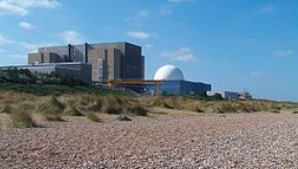Nuclear Not Happening
Posted: October 24, 2022 Filed under: Energy, Society Leave a commentSaturday November 17th 2035
No mains electricity for the last two days, the fifteenth cut of the year lasting more than 24 hours, no sun for the photovoltaics we got ten years ago, no wind for the roof turbine. Main problem is the freezer. If there’s no power tomorrow, no sun and no wind, we’ll have to put the generator on. That’s not the automatic response any longer, because it’s an elderly model running on petrol, which is super expensive while pensions are meagre.

We have five gallons in a drum and we try not to use it. Why has the power failed when we haven’t had a storm? Simple, we are over-dependent on sun and wind for our electricity, and the nuclear stations that we were promised are still mired in delays. Only three stations are still working, that’s Sizewell B, and the two at Hinkley Point C. They have a total capacity of 4,476 MW, and I think last year they produced about 33 billion kWh. That’s about 470 kWh for each of Britain’s 70 million people compared with 910 kWh from nuclear generation for each of the 65 million back in 2020.
It’s about time we stopped using our freezer at all and relied wholly on preserving jars, smoking and salt!
Laughing at a Good Life
Saturday November 24th 2035
The power returned on Monday. Wil cycled over today and we watched an ancient comedy repeat from about 60 years ago, called The Good Life about a couple called Tom and Barbara Good who decided to become mini-smallholders in their home in suburban Surbiton, and to live entirely on the output from their garden and allotment, to the chagrin of their conventional friends and neighbours, status-aware Margo Leadbetter and executive husband Jerry. The Goods are cash-poor but live in a comfortable house and always have fuel for their range. They have clothes from their old life, vegetables and eggs from their expansive super-sized garden and no need of entertainment because the Leadbetters unknowingly provide all of that. Margo is forever in social combat with Mrs Dooms-Paterson, who is at the pinnacle of the Surbiton suburban hierarchy. The Good Life ended after three years, about the length of time that Tom and Barbara could reasonably survive on garden produce and items they had bought earlier, before the roof of their middle-class house began to leak and the paintwork to flake off. It’s different now, not a choice any longer, and even tougher because houses with large gardens have not been built for decades. The surnames are revealing: who could quarrel with the Goods, trying their best, but Leadbetter, lead-better, suggests we should regard the rebels as crazy and follow the Leadbetter path to salaried material contentment. While it lasted.